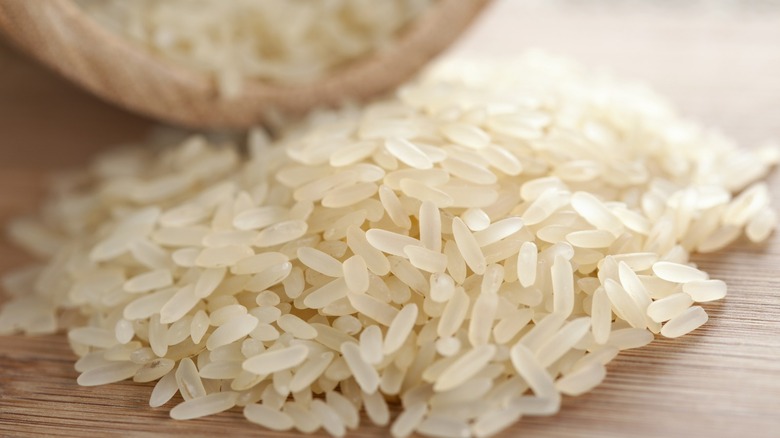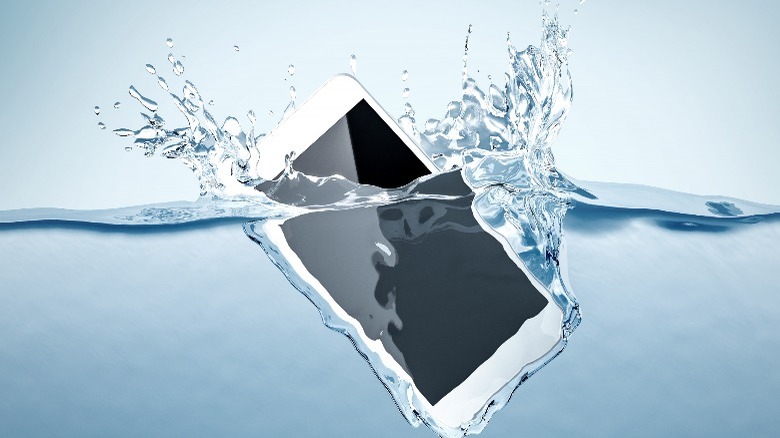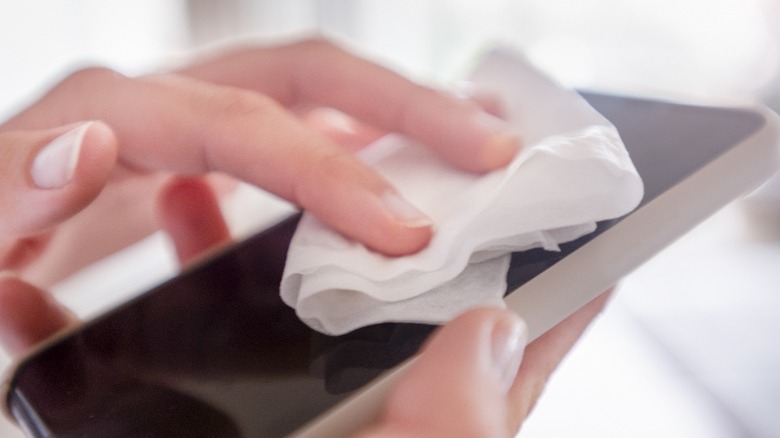Here's Why You Shouldn't Use Rice To Dry Out Your Wet Smartphone
Regardless of how careful you are around your electronics, there's a chance you've spilled some sort of liquid on your smartphone before. Whether you accidentally dropped your device into a cup of coffee while you spent your sweet time watching TikToks or your device slipped from your hands, right into the toilet — accidents happen!
Now, once the damage has been done, your first instinct may be to put your drenched smartphone into a bowl of rice to dry it out. We don't blame you — putting a wet device into a bag of rice is what we've been told for ages.
While you may see multiple people swear by using rice to absorb any excess moisture stuck in your device, this technique is nothing more than a myth. In fact, using rice to dry out your wet smartphone may end up damaging your device even more, and iPhone repairs are expensive enough.
The confusing part is that research from well-reputed institutions like Colorado State University suggests that due to its growing conditions, rice is a good absorber compared to other crops. If that's the case, you may wonder why using rice to dry out your smartphone is a bad decision. More importantly, if tossing a wet device into a bag of rice isn't the wisest decision, what do you do if your phone gets water-damaged?
What actually happens when you use rice to dry your device
Whether you own an iPhone or a Google Pixel, many modern smartphones come with some level of water resistance or waterproofing to minimize the risk of water damage. The Ingress Protection (IP) scale is used to determine how resistant your device is to water and dust. Apple's, Samsung's, and Google's flagship devices all feature an IP68 rating.
According to the IP system, the first digit indicates your device's resistance to dust and debris, and the second digit represents your device's water resistance. If your device has a water resistance rating of 8, it ultimately means that it can survive being immersed in 1.5 meters of water, for up to 30 minutes.
While it's unlikely that rice dust, starch, or water, will get inside your device, thanks to most modern devices' premium build and IP68 rating, it could make its way into your phone's charging port, headphone jack, speaker, and other internal components. Once it does, it'll be a pain to clean out. Even Apple warns users against putting their phones in a bag of rice.
If your smartphone isn't water resistant, it could end up water-logged and, despite rice's absorbent qualities, it will fail at removing all the moisture from the internal components of your device. Drying must be more thorough to prevent corrosion, which occurs when moisture reacts with the metals inside your device. Once corrosion sets in, you're usually left with no choice but to bid farewell to your device.
Here's what you should do to save your wet smartphone instead
Power off your device if it's still switched on and make sure not to plug your smartphone into a charger when it is still wet. Now, it's a game of patience and quickness. You should now focus on drying out your smartphone by removing any excess water and preventing further damage. To begin, check if your device has a removable battery and remove it immediately if it does. It's a good idea to remove SIM and SD cards from your device and wipe them using a lint-free cloth as well.
Tap your smartphone gently against your hand to remove any excess water that's stuck in your device's charging port and speakers. Make sure to also dry the ports and speakers using a dry lint-free cloth. Now, let your smartphone dry by placing it in a warm room. We recommend against placing it under direct sunlight or using compressed heat to dry your device, as it may further damage your wet device.
If you have packets of silica gel lying around your house, you can also toss your wet smartphone into a bowl filled with the contents of the packet and leave it in there for a day or two. Silica gel is much more effective than rice and manages to do a good job of absorbing any excess moisture. If nothing seems to work, unfortunately it is time to have your device examined by a professional.


